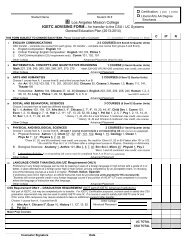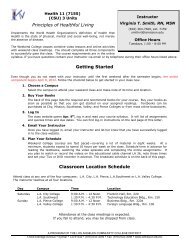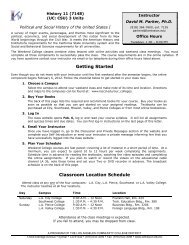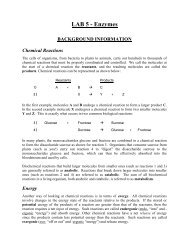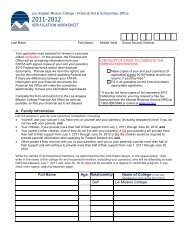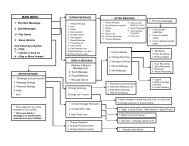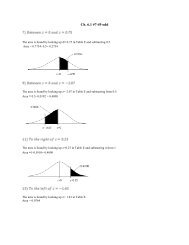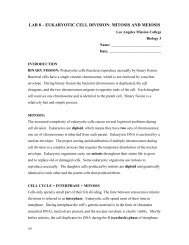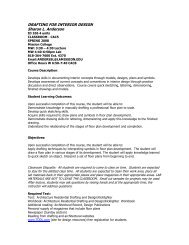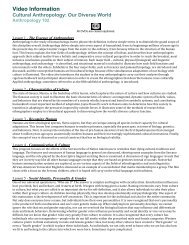Lab #3
Lab #3
Lab #3
Create successful ePaper yourself
Turn your PDF publications into a flip-book with our unique Google optimized e-Paper software.
Exercise 3C – Examining protozoa<br />
You will prepare three different wet mounts of live protozoa as outlined below: Paramecium (view at low<br />
power), Euglena (view at high power) and a sample of pond water or hay infusion (low or high power).<br />
The protozoa you will see can move quite fast under the microscope, so prepare each wet mount as<br />
follows to ensure that they are slowed enough for you to view them:<br />
1) Place one drop of “protoslo” on a clean glass slide (this will help slow the critters down!)<br />
2) Using a transfer pipet, add one drop of sample (from the bottom of the container) to the<br />
protoslo and slowly add a cover slip over the sample, laying it down gently at an angle.<br />
3) Mount the slide on your microscope and prepare to view the slide at low power.<br />
4) To help you find the level of focus for the protozoa you want to examine, focus on either<br />
a bubble or the edge of the cover slip.<br />
5) Close the diaphragm lever almost all the way to increase the contrast, and locate a specimen.<br />
Unless you do this, there will not be enough contrast to see any specimens.<br />
Yeast<br />
The kingdom Fungi includes multicellular fungi such as molds and mushrooms, as well as singlecelled<br />
fungi which are collectively known as the yeasts. Yeasts are immensely important to<br />
humanity. They are essential for producing certain foods and beverages (e.g., bread, beer, wine,<br />
chocolate), and have allowed scientists to effectively study the nature of eukaryotic cells and to<br />
produce commercial medicines such as insulin for diabetics. In the next exercise you will look at<br />
the species of yeast commonly referred to as “baker’s yeast” or “brewer’s yeast”:<br />
Saccharomyces cerevisiae.<br />
Exercise 3D – Examining yeast<br />
Your instructor will set up a wet mount of live yeast to be viewed at 1000X at your table. The dye<br />
methylene blue will be added to provide contrast between the yeast and the background.<br />
1) Examine the slide for live yeast, which should look like “golden eggs” on a bluish background.<br />
You may also see some dead yeast cells which will be dark blue. Draw a few of the live yeast cells<br />
on your worksheet and identify the nucleus in each.<br />
Plant Cells<br />
The kingdom Plantae includes organisms such as mosses and ferns as well as the familiar conebearing<br />
plants (Gymnosperms) and flowering plants (Angiosperms). All plants are multicellular<br />
and sustain themselves by the process of photosynthesis. Most plants have distinct organs and<br />
tissues consisting of different cell types. Despite their differences, most plant cells have the<br />
same basic structures as illustrated on page 9. For the next exercise, you will observe live plant<br />
cells in a leaf from the aquatic plant Elodea:



